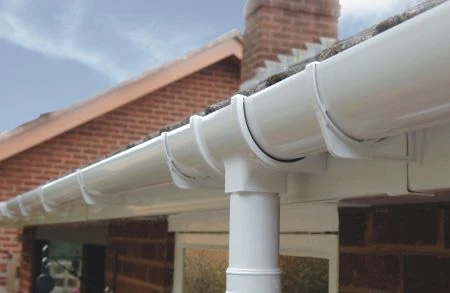
Reliable Guttering
Add a review FollowOverview
-
Founded Date Februar 18, 1922
-
Sectors Produktion
-
Posted Jobs 0
-
Viewed 159
Company Description
The Most Prevalent Issues In Drainage
Understanding Roof Drainage: Key Concepts, Methods, and Best Practices
The roof plays a vital function in the protection and durability of a building. One vital aspect of roof style and maintenance works roof drainage. Correct drainage systems avoid water accumulation, which can lead to severe structural damage and early degeneration. This post explores the significance of roof drainage, typical methods, products used, and the best practices to ensure efficient water management.
Importance of Roof Drainage
Roof drainage is vital for a number of factors:
Preventing Water Accumulation: Standing water can result in leaks, structural damage, and possible mold growth.
Enhancing Building Longevity: Proper drainage helps mitigate wear and tear on roofing products, therefore extending the roof’s life.
Preserving Aesthetic Appeal: A properly designed drainage system adds to the general appearance of the structure, preventing undesirable water accumulation.
Mitigating Ice Dams: In colder climates, reliable roof drainage can assist prevent the development of ice dams, which can harm gutters and roofing products.
Ecological Responsibility: Efficient water management through roof drainage can minimize runoff and reduce the environmental impact.
Kinds Of Roof Drainage Systems
Different approaches can be utilized to make sure reliable roof drainage. The most common types consist of:
1. Gravity Drainage
This technique utilizes gravity to direct water away from the roof surface area.
Internal Drains: Located within the building’s structure, these drains pipes usage piping systems to get rid of water straight to the ground or the structure’s drainage system.
Roof Drainage Leaders: These are vertical pipes used to bring rainwater from the roof to the ground.
2. Slope Drainage
Producing slopes in the roof structure makes sure water streams towards designated drainage points.
Positive Drainage: A pitch or slope directs water to specific drains pipes or ambuscades.
Boosted Slope Systems: These often feature structured styles to improve water circulation efficiency.
3. Gutter Systems
Gutters gather water that runs off the roof edges, directing it securely away.
K-Style Gutters: Popularly utilized due to their visual and practical advantages.
Half-Round Gutters: Known for their classic appearance and effective water circulation.
4. Trough Drainage
This approach integrates broad, shallow channels developed to obstruct water before it collects.
Trench Drains: Ideal for big flat roofing systems, these systems frequently feature grates to keep debris out while directing water.
Catch Basins: Positioned strategically to collect rainwater and filter out debris.
5. Green Roofing Systems
These include vegetation on roofs that help in water absorption and management.
Substantial Green Roofs: Lower maintenance and require less soil depth.
Extensive Green Roofs: Require more maintenance with deeper soil and a broader variety of plants.
Secret Materials for Roof Drainage
The products used for roof drainage systems considerably impact their durability and effectiveness.
| Product Type | Benefits | Disadvantages |
|---|---|---|
| PVC | Light-weight, corrosion-resistant | Prone to UV damage |
| Cast Iron | Long lasting, sound-dampening | Heavier, vulnerable to rust |
| Aluminum | Lightweight, resistant to deterioration | Can be dented quickly |
| Stainless Steel | Incredibly resilient, corrosion-resistant | Costly |
| Concrete | Lasting, robust | Heavy, can crack without maintenance |
Best Practices for Roof Drainage
To guarantee the durability and effectiveness of roof drainage, code.autumnsky.jp, systems, consider the following best practices:
Regular Inspection: Conduct regular assessments to identify debris accumulation, blockages, or structural damage.
Maintain Clear Drains and Gutters: Promptly get rid of leaves, dirt, and other blockages to ensure water streams easily.
Install Properly Sized Systems: Roof drainage systems should be effectively sized for the structure’s requirements and local rainfall patterns.
Consider Local Weather Conditions: Design drainage systems considering the local climate to prevent flooding and other drainage issues.
Use Professional Services: Hiring experienced professionals for installation and maintenance can significantly boost efficiency.
FAQs About Roof Drainage
Q1: What are the signs of ineffective roof drainage?
Signs of inadequate roof drainage consist of leakages, water stains on ceilings, mold growth, and drooping ceilings or walls.
Q2: How frequently should roof drainage systems be inspected?
It is suggested to check roof drainage systems at least twice a year, ideally in spring and fall, and after substantial storms.
Q3: Can I install a roof drainage system myself?
While small maintenance tasks can be carried out by homeowners, it is best to employ professionals for installation to guarantee it fulfills local structure codes and functions properly.
Q4: What should I do if I find blockages in my roof drainage system?
If obstructions are found, they must be cleared immediately. If the blockage is not easily accessible or manageable, it may be best to seek advice from a professional.
Q5: Are green roofings effective for drainage?
Yes, green roofs can be very effective for drainage as they take in rainwater, minimizing overflow while offering insulation and visual benefits to structures.
Roof drainage is an important part in protecting buildings against water damage. By understanding the types of drainage systems, the products utilized, and best practices for maintenance, homeowner can substantially improve the longevity and efficiency of their roofing systems. An efficient drainage system not only avoids costly repairs however likewise contributes to a building’s general sustainability. Investing time and resources into efficient roof drainage is a financial investment in the structure’s future.

